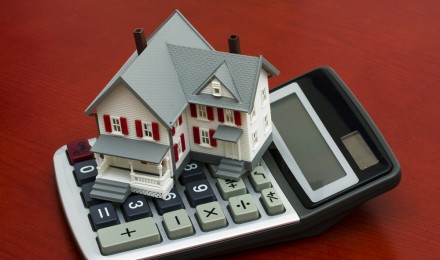As the recovery progresses, those who are looking to buy homes will start to increase. Banks will gradually start to lend money again, and people will often be surprised when they discover private mortgage insurance added on to their monthly payments. Private mortgage insurance, or PMI, is an insurance that protects the lender in the event that the borrower defaults on their payment. The yearly premiums are generally around 0.5% of the initial amount borrowed. The home buyer is stuck paying the bill. So many borrowers are left asking the question: how do I avoid PMI?
Down Payment
The easiest way to avoid paying for PMI is to put 20% down on the house. At the time of the appraisal the buyer should be ready to purchase 20%, or more, equity in the home. Legally the lender cannot charge PMI to the buyer if the buyer has 20% or greater stake in the house.
Use Multiple Loans
Most people do not have that much money sitting idly that they can invest into their new home. So instead of fronting 20% in cash, many people choose to use two or even three loans. The initial loan will be for 80% of the house value. The subsequent loan, or loans, will be for the remaining amount. The second and third mortgages will have a higher interest rate attached to them, but the buyer can often save money by setting up their loan in this manner. A good mortgage broker will walk the buyer through these options.
Make Improvements to the Home
Homeowners that are already in their home, or those who plan to do a number of upgrades and repairs immediately, can take advantage of the added value they are putting into the house. By adding on, or remodeling, the house increases in value. If the homeowner pays (at their own expense) for a new appraisal, and the value has increased enough to give the owner greater than 20% equity, the owner can request the PMI to be dropped from their bill.
Pay Down the Mortgage
Sometimes there is no other option but to get into the house, and pay the PMI for the first few years as the mortgage is paid down. In order to build equity fast enough, the borrower should be sure to tack on additional principal payments each month. When the loan hits 78% of the last appraisal value, the lender legally must drop the PMI coverage even if the homeowner does not request it.
Unfortunately there is really no way to completely avoid private mortgage insurance if you have less than 20% equity in the home. There are, however, a few ways you can get rid of it as quickly as possible. Picking the method that suits your financial situation the best will help you to save the most money on your loan. Just remember, all interest paid on mortgages, and PMI premiums are deductible from your federal taxes.
As the recovery progresses, those who are looking to buy homes will start to increase. Banks will gradually start to lend money again, and people will often be surprised when they discover private mortgage insurance added on to their monthly payments. Private mortgage insurance, or PMI, is an insurance that protects the lender in the event that the borrower defaults on their payment. The yearly premiums are generally around 0.5% of the initial amount borrowed. The home buyer is stuck paying the bill. So many borrowers are left asking the question: how do I avoid PMI?
Down Payment
The easiest way to avoid paying for PMI is to put 20% down on the house. At the time of the appraisal the buyer should be ready to purchase 20%, or more, equity in the home. Legally the lender cannot charge PMI to the buyer if the buyer has 20% or greater stake in the house.
Use Multiple Loans
Most people do not have that much money sitting idly that they can invest into their new home. So instead of fronting 20% in cash, many people choose to use two or even three loans. The initial loan will be for 80% of the house value. The subsequent loan, or loans, will be for the remaining amount. The second and third mortgages will have a higher interest rate attached to them, but the buyer can often save money by setting up their loan in this manner. A good mortgage broker will walk the buyer through these options.
Make Improvements to the Home
Homeowners that are already in their home, or those who plan to do a number of upgrades and repairs immediately, can take advantage of the added value they are putting into the house. By adding on, or remodeling, the house increases in value. If the homeowner pays (at their own expense) for a new appraisal, and the value has increased enough to give the owner greater than 20% equity, the owner can request the PMI to be dropped from their bill.
Pay Down the Mortgage
Sometimes there is no other option but to get into the house, and pay the PMI for the first few years as the mortgage is paid down. In order to build equity fast enough, the borrower should be sure to tack on additional principal payments each month. When the loan hits 78% of the last appraisal value, the lender legally must drop the PMI coverage even if the homeowner does not request it.
Unfortunately there is really no way to completely avoid private mortgage insurance if you have less than 20% equity in the home. There are, however, a few ways you can get rid of it as quickly as possible. Picking the method that suits your financial situation the best will help you to save the most money on your loan. Just remember, all interest paid on mortgages, and PMI premiums are deductible from your federal taxes.







